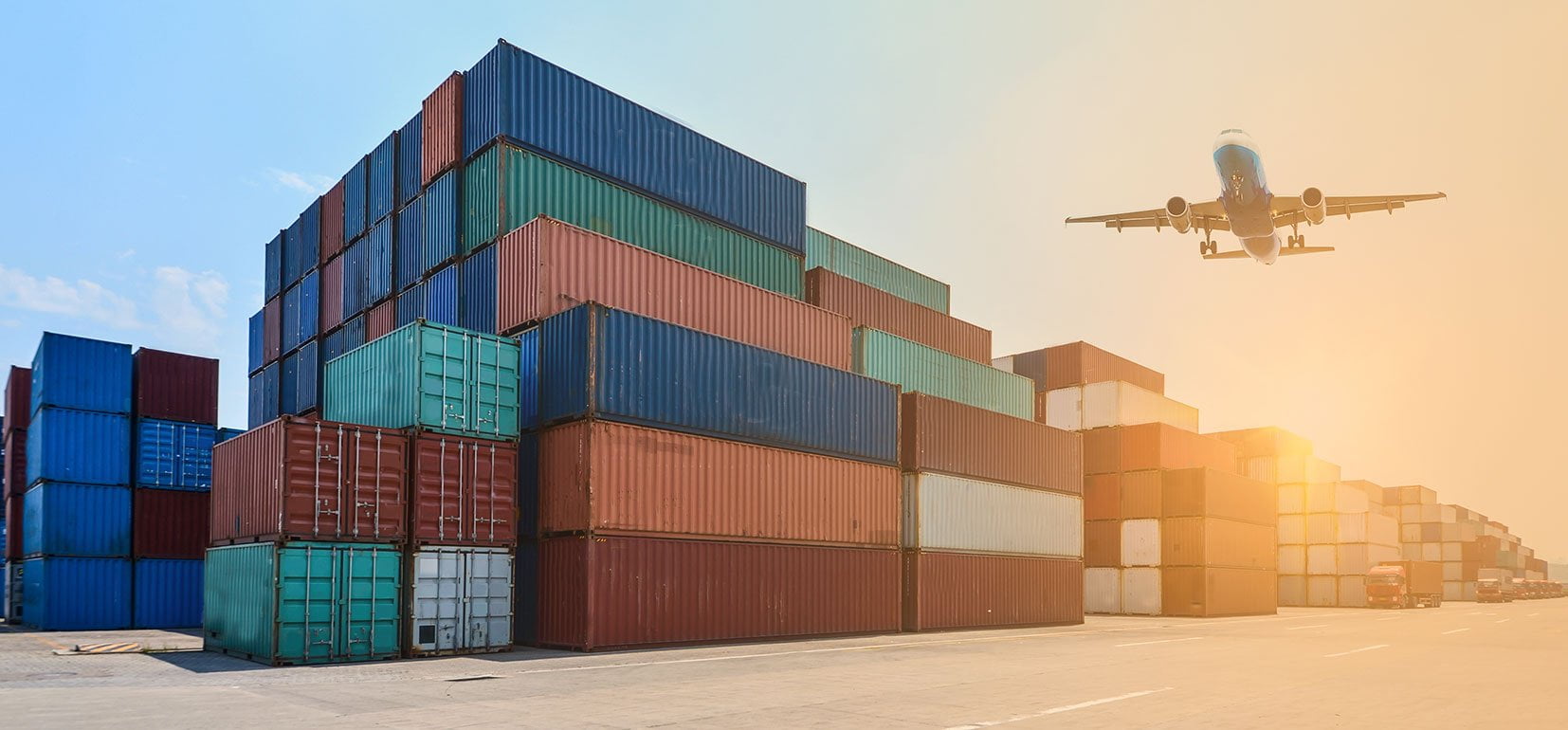1. Understanding Commodity Prices
Commodity prices are the lifeblood of global trade, influencing everything from the cost of your morning coffee to the price of the petrol you put in your car. But what exactly determines these prices? It’s a complex interplay of supply, demand, and a host of other factors.
Supply is driven by factors like production costs, weather conditions, and geopolitical events. For instance, a drought in a coffee-growing region can reduce the supply of coffee beans, pushing prices up. Similarly, a political crisis in an oil-producing country can disrupt supply and send oil prices soaring.
On the other hand, demand is influenced by economic growth, population trends, and consumer preferences. For example, if the economy is booming and people are feeling confident about their financial future, they might buy more commodities, driving up demand and prices. Conversely, if there’s a shift in consumer preferences away from a particular commodity, demand and prices could fall.
But it’s not just supply and demand at play. Market sentiment can also have a big impact on commodity prices. If traders are feeling bullish about a particular commodity, they might buy more of it, pushing up prices. Conversely, if they’re feeling bearish, they might sell, causing prices to fall.
Then there’s the role of currency exchange rates. Commodities are typically priced in US dollars, so a weaker dollar can make commodities cheaper for buyers using other currencies, potentially pushing up demand and prices.
Finally, there’s the influence of government policies. Tariffs, quotas, and other trade policies can affect both supply and demand, and therefore commodity prices. For instance, if a government imposes a tariff on a commodity, it could reduce demand and push down prices.
In short, commodity prices are determined by a complex mix of factors, and understanding these can give traders a crucial edge in the market.
1.1. Definition of Commodity
In the bustling world of trading, one term you’ll frequently encounter is commodity. But what exactly does this term mean? At its core, a commodity is a basic good or raw material that is used in commerce. These are often used as inputs in the production of other goods or services. They are interchangeable with other goods of the same type, and they are bought and sold freely as interchangeable units on global commodity markets.
Commodities span a wide range of categories. They can be agricultural products like wheat, corn, and soybeans. They can be energy carriers like crude oil, natural gas, and gasoline. Precious metals like gold, silver, and platinum, as well as industrial metals like aluminum, copper, and zinc, also fall under commodities. Even environmental commodities like carbon credits and emissions allowances are part of this broad category.
The defining feature of a commodity is its standardization. For instance, a bushel of high-grade wheat from a farm in Kansas is considered equivalent to a bushel of high-grade wheat from a farm in France. This standardization allows commodities to be traded on exchanges, where buyers and sellers can transact without having to inspect the goods personally.
However, it’s important to note that not all commodities are created equal. Some commodities, known as hard commodities, require extraction or mining, like gold and oil. Others, known as soft commodities, are agricultural products or livestock. The distinction between hard and soft commodities can impact how they are traded and how their prices are determined.
Understanding the definition of a commodity is the first step in grasping how commodity prices are determined. It sets the stage for exploring the complex interplay of supply and demand, market sentiment, geopolitical events, and a host of other factors that drive the price of commodities in global markets.
1.2. Basics of Commodity Pricing
Commodity pricing is a fascinating dance of supply, demand, and market speculation. It’s a world where the price of your morning coffee can be influenced by weather patterns on the other side of the globe, and a bumper crop of wheat can send prices tumbling.
In the simplest terms, supply and demand are the primary drivers of commodity prices. If a commodity is in high demand but short supply, prices will rise. Conversely, if supply outstrips demand, prices will fall. This is the basic law of economics, but in the commodities market, it’s influenced by a range of factors from harvest yields to political instability.
Market speculation also plays a critical role in commodity pricing. Traders buy and sell commodities based on their predictions of future price movements. If traders believe a commodity’s price will rise in the future, they’ll buy now to sell later at a profit. This can drive up prices in the short term, even if supply and demand fundamentals suggest they should be lower.
Another key factor in commodity pricing is the value of the US dollar. Since most commodities are priced in dollars, a stronger dollar makes commodities more expensive for foreign buyers, which can dampen demand and lower prices. Conversely, a weaker dollar can boost demand and push prices higher.
Then there are geopolitical factors. Wars, trade disputes, and political instability can disrupt supply chains, creating uncertainty that can send prices soaring. For example, a coup in a major oil-producing country can cause oil prices to spike.
Finally, let’s not forget the role of weather and natural disasters. Droughts, floods, and hurricanes can devastate crops, reducing supply and driving up prices. On the flip side, a run of good weather leading to bumper crops can increase supply and push prices down.
In short, commodity pricing is a complex interplay of multiple factors, with changes in any one area capable of causing significant price swings. Understanding these basics can help traders make more informed decisions and potentially profit from these price movements.
2. Factors Influencing Commodity Prices
Commodity prices are influenced by a myriad of factors, each carrying its own weight in the grand scheme of things. One of the most significant influencers is supply and demand. When demand for a commodity outstrips its supply, prices tend to rise. Conversely, an excess supply with limited demand can cause prices to plummet.
Political instability is another key factor. Countries that are major producers of certain commodities can impact global prices. Any political unrest or policy changes can disrupt production, thereby affecting the commodity’s price.
Weather conditions also play a crucial role, especially in the pricing of agricultural commodities. Unfavorable weather conditions can lead to poor harvests, reducing supply and driving up prices.
The strength of the currency, particularly the U.S. dollar, also has a significant impact. Commodities are typically priced in dollars. Therefore, a strong dollar can make commodities more expensive for buyers using other currencies, affecting demand and, subsequently, prices.
Market speculation is another factor that can’t be overlooked. Speculators, betting on future price movements, can cause prices to fluctuate. If speculators believe a commodity’s price will rise in the future, they might buy large quantities, driving up demand and price.
Lastly, global economic health influences commodity prices. In a thriving economy, industries may increase production, leading to higher demand for commodities. In contrast, during a recession, demand for commodities may decrease as industries cut back on production.
Understanding these factors can provide valuable insight into the complex dynamics of commodity pricing, equipping traders with the knowledge to make informed investment decisions.
2.1. Supply and Demand
Supply and demand, the heart of economic theory, plays a pivotal role in determining commodity prices. The dance between these two forces sets the stage for the price you pay for your morning cup of coffee, the gold in your jewelry, and the gas that powers your car.
When the demand for a commodity outstrips its supply, prices tend to rise. This is because buyers are willing to pay more to secure the product, leading sellers to increase their prices. For example, if a frost hits the coffee-growing regions of Brazil, the supply of coffee beans could diminish. As coffee drinkers continue to crave their caffeine fix, the demand remains the same, but with fewer beans available, prices increase.
Conversely, when the supply of a commodity exceeds its demand, prices generally fall. This is because sellers need to make their product more attractive to buyers, and one way to do this is by reducing the price. For instance, if technological advancements lead to a surge in gold mining, the market could become flooded with gold. If the demand for gold doesn’t match this increased supply, prices will drop.
However, it’s important to note that the relationship between supply and demand isn’t always straightforward. Other factors, such as government regulations, market speculation, and geopolitical events, can also influence commodity prices. For example, a government might impose tariffs on a certain commodity, which would increase its price, regardless of supply and demand dynamics.
In essence, while supply and demand are key drivers of commodity prices, they are part of a complex web of factors that interact to determine the final price you pay for a product. Understanding this interplay can help traders make informed decisions and potentially reap significant rewards.
2.2. Geopolitical Factors
In the intricate web of commodity pricing, one cannot overlook the significant influence of geopolitical factors. These are the elements that shape the world stage, acting as the invisible hand that steers the direction of commodity prices. For instance, consider the impact of international relations on oil prices. When tensions escalate in oil-rich regions, it’s not uncommon to see a spike in oil prices due to the perceived threat to supply.
Trade policies are another example. Tariffs and sanctions can disrupt the flow of commodities, creating a ripple effect on prices. A country imposing high tariffs on imported steel, for example, can cause steel prices to soar. Conversely, a trade agreement that reduces barriers can lead to an influx of a commodity, potentially driving down prices.
In the same vein, political stability plays a key role. Countries with stable governments tend to have more predictable commodity markets. On the other hand, political instability can lead to fluctuations in commodity prices. For instance, a sudden change in government might lead to policy changes affecting mining operations, causing uncertainty in the market and potential price volatility.
Moreover, geopolitical factors often intertwine with other determinants of commodity prices. For instance, a country’s environmental policy can affect its energy consumption, which in turn influences the demand for commodities like oil and natural gas.
Indeed, the impact of geopolitical factors on commodity prices is complex and multifaceted. Traders who keep a close eye on the world stage can gain valuable insights, helping them anticipate market trends and make informed decisions.
2.3. Economic Factors
Economic factors wield significant influence over the ever-changing landscape of commodity prices. A primary driver is the classic economic principle of supply and demand. An increase in demand or a decrease in supply often catapults commodity prices upwards. Conversely, a decrease in demand or an increase in supply can send prices tumbling down.
Consider the global oil market. When economies are booming, industries thrive, and the demand for oil, a key input for many sectors, skyrockets. This increased demand, coupled with a steady or decreasing supply, can cause oil prices to soar. Conversely, during an economic downturn, demand for oil may fall, leading to lower prices.
Inflation is another economic factor that can impact commodity prices. As the cost of goods and services increases, the value of money decreases, which can, in turn, drive up commodity prices. For instance, when inflation rates are high, investors often turn to commodities like gold as a ‘safe haven’ investment, driving up its price.
Exchange rates also play a vital role. Commodities are typically priced in US dollars on the global market. Therefore, fluctuations in the value of the dollar can directly impact commodity prices. A stronger dollar makes commodities more expensive for buyers using other currencies, which can dampen demand and potentially lead to lower prices.
Finally, government policies and political stability can significantly sway commodity prices. Policies that encourage or discourage production or consumption of certain commodities can directly affect their prices. Similarly, political instability can disrupt supply chains, leading to price volatility. For instance, geopolitical tensions in oil-rich regions can cause oil prices to spike due to concerns about supply disruptions.
Understanding these economic factors is crucial for traders looking to navigate the complex and often volatile world of commodity trading.
2.4. Environmental Factors
When it comes to the complex world of commodities trading, one of the most impactful, yet often overlooked, aspects is the role of environmental factors. The simple act of rain falling on a crop field, or the temperature dipping low in an oil-producing region, can send shockwaves through the market, causing prices to fluctify wildly.
For instance, consider the agricultural commodities like wheat, corn, and soybeans. The yield of these crops is heavily dependent on weather conditions. A severe drought or an unusually wet season can drastically reduce crop yields, leading to a shortage in the market. This scarcity, in turn, drives up the prices as demand outpaces supply. Similarly, an ideal growing season with optimal weather conditions can result in bumper harvests, flooding the market with supply and thereby driving prices down.
Another key environmental factor is natural disasters. Events such as hurricanes, earthquakes, or wildfires can disrupt production and transportation of commodities, creating temporary shortages and price spikes. For example, a hurricane hitting the Gulf of Mexico can halt oil drilling and refining activities, reducing the supply of crude oil and gasoline and increasing their prices.
Moreover, environmental regulations and policies can also have a significant impact on commodity prices. Stricter emission standards can increase production costs for energy commodities like coal and oil, making them more expensive. On the other hand, subsidies and incentives for renewable energy can reduce the costs and prices of commodities like solar panels or wind turbines.
Lastly, long-term environmental trends, such as climate change, can have profound impacts on commodity prices. Rising global temperatures can alter agricultural patterns, potentially reducing the supply of certain crops and increasing their prices. Similarly, the transition towards a low-carbon economy can reduce demand for fossil fuels, putting downward pressure on their prices.
In essence, environmental factors play a pivotal role in determining commodity prices. They can create short-term price volatility due to weather events or natural disasters, and they can drive long-term price trends due to climate change or policy changes. Traders who can accurately predict and respond to these environmental factors will have a significant edge in the commodities market.
3. Role of Speculation in Commodity Prices
Speculation plays a pivotal role in the determination of commodity prices. Speculators are essentially risk-takers, individuals or institutions that make informed guesses on the future movements of commodity prices. They do not produce or consume commodities; instead, they buy and sell commodity contracts with an aim to make a profit from price fluctuations.
For instance, if speculators predict that the price of crude oil will rise in the future, they will buy oil futures contracts. If their prediction is correct, they can sell these contracts at a higher price later, making a profit. Conversely, if they predict a fall in prices, they can sell contracts and later buy them back at a lower price.
Speculation can impact commodity prices in two significant ways. Firstly, it can increase price volatility. High levels of speculative activity can cause prices to fluctuate wildly, as speculators buy and sell contracts based on their price predictions. Secondly, speculation can influence the price discovery process. Speculators’ buying and selling decisions reflect their expectations of future supply and demand conditions, which can help to reveal information about future price trends.
However, the influence of speculation on commodity prices is a contentious issue. Some argue that speculation can distort prices, leading to price bubbles or crashes. Others contend that speculation improves market efficiency by facilitating price discovery and providing liquidity.
In reality, the impact of speculation on commodity prices likely lies somewhere in between these two extremes. While excessive speculation can indeed lead to price instability, moderate levels of speculative activity can contribute to more efficient and liquid markets. Thus, understanding the role of speculation in commodity pricing requires a nuanced perspective, acknowledging both the potential benefits and risks of this activity.
It’s worth noting that while speculators can influence commodity prices, they do not control them. Ultimately, the fundamental forces of supply and demand are the primary drivers of commodity prices. Speculators simply interpret and respond to these underlying market conditions.
In the world of commodities trading, speculation is a high-stakes game of prediction and risk management. It’s a game that can yield substantial profits for those who play it well, but it can also result in significant losses for those who get it wrong. As such, speculation is not for the faint-hearted. But love it or hate it, there’s no denying the influential role it plays in the world of commodity prices.
3.1. Understanding Speculation
Speculation, often viewed as a high-stakes game of chance, is a fundamental element in the mechanism of determining commodity prices. It’s a dynamic process, where traders make educated guesses about future price movements, based on a host of factors. These could range from economic indicators to geopolitical events, from weather patterns to market sentiment.
For instance, consider a scenario where a trader believes that the price of crude oil will rise due to increasing geopolitical tensions in oil-producing nations. The trader would then buy oil futures contracts, essentially agreements to purchase oil at a certain price at a future date. If the price does rise as anticipated, the trader stands to make a profit by selling the contracts at a higher price.
However, speculation is not without its risks. If the price of oil falls instead, the trader would incur a loss. Thus, speculation can lead to significant price volatility in commodity markets. Despite the inherent risks, speculation serves a crucial function in commodity markets by providing liquidity and aiding in price discovery.
In essence, speculation is a double-edged sword. It can lead to price volatility, which can be a source of risk for traders. On the other hand, it also facilitates price discovery and provides liquidity, which are vital for the smooth functioning of commodity markets. Therefore, understanding speculation is key to comprehending the intricacies of commodity price determination.
3.2. Speculation vs. Hedging
In the world of commodity trading, there are two primary strategies employed by traders: speculation and hedging. Speculators are the risk-takers, the high rollers of the commodity market. They make educated guesses on the future price movements of commodities, hoping to turn a profit. They buy when they believe prices will rise and sell when they predict a drop. Their actions, while risky, are essential for the liquidity of the market.
On the other side of the coin are the hedgers. These are the cautious players, the insurance policy holders of the commodity world. Hedgers use commodities to offset potential losses in other areas of their portfolio. For instance, an airline company might hedge against rising fuel prices by buying oil futures. If the price of oil rises, the profit from the futures contract offsets the increased cost of fuel.
These two strategies, speculation and hedging, play a significant role in determining commodity prices. Speculators drive the market, creating fluctuations in prices through their buying and selling activities. Their actions can cause commodity prices to rise and fall dramatically, especially in volatile markets.
Hedgers, on the other hand, provide stability. Their actions help to even out the highs and lows caused by speculators, leading to more consistent commodity prices. By hedging their bets, they help to ensure that commodity prices do not swing too wildly in either direction.
While both speculators and hedgers play vital roles in the commodity market, it is the balance between the two that ultimately determines commodity prices. Too much speculation can lead to volatile price swings, while too much hedging can stifle market activity. Thus, a healthy commodity market needs both speculators to drive activity and hedgers to provide stability.









